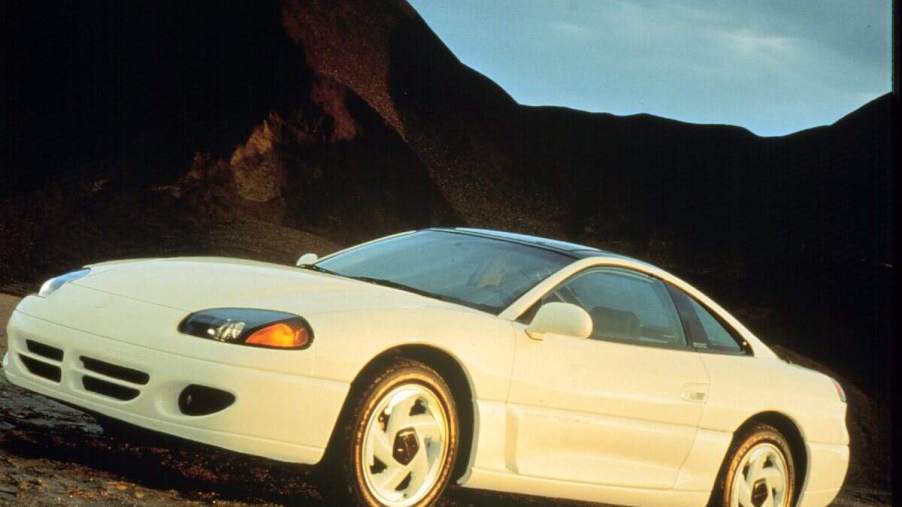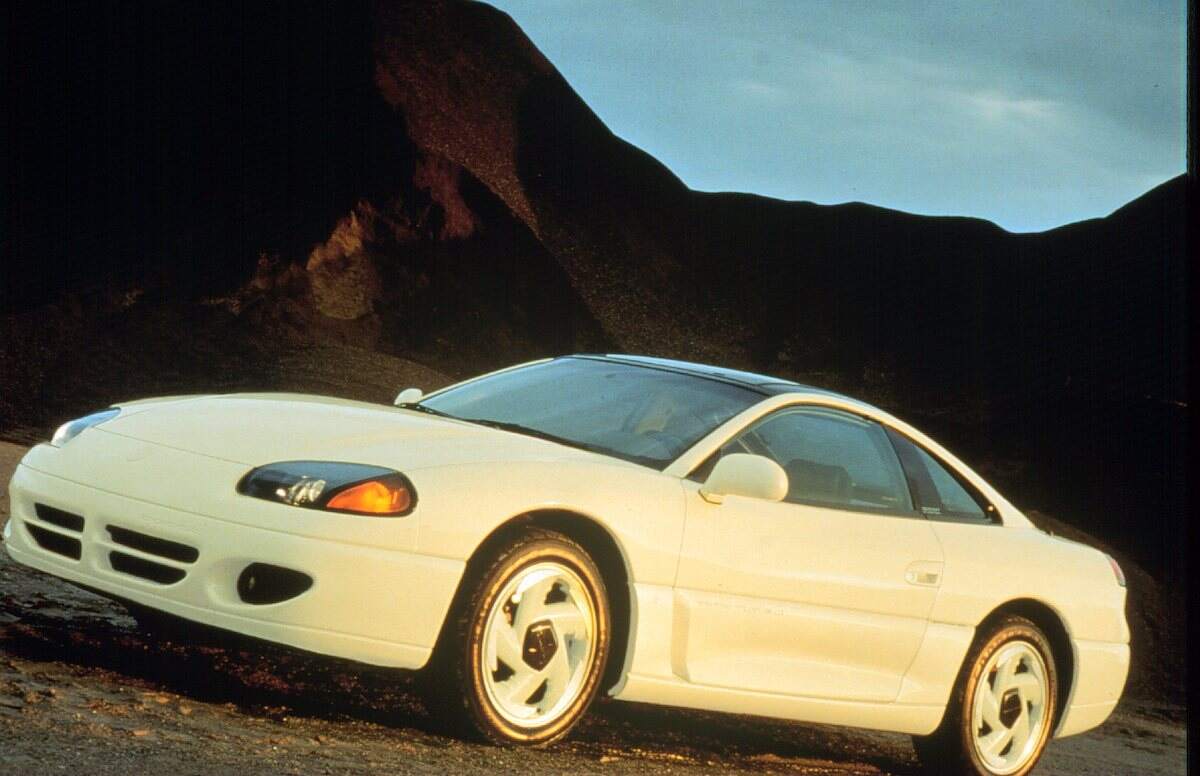
There Was Only 1 Big Problem With the Dodge Stealth
In 1991, Chrysler and Mitsubishi teamed up to produce what can only be described as a budget supercar. The American version was the Dodge Stealth, a Chrysler-designed GT loaded with technology and performance features. It looked fast and went faster. Packing a 300-hp twin-turbo V6 and all-wheel drive, it proved as quick as other contemporary sports cars, including the Chevrolet Corvette, Nissan 300ZX, and Toyota Supra. But like any other vehicle, the Dodge Stealth had its problems.
The interior was a bit cramped and difficult to see out of, and the controls weren’t as easy to read as those in cars like the 300ZX. However, the Dodge Stealth had one major issue: All of the technology was finicky and expensive to fix.
The Dodge Stealth: A brief history

The Dodge Stealth launched in 1990, sharing its interior and mechanical bits with the Mitsubishi 3000GT. That included Mitsubishi’s 3.0-liter V6 used in various Chrysler products ranging in performance. Beginning with a mild 160-hp engine, the Stealth also offered a twin-turbo, 24-valve, dual-overhead-cam variant making up to 320 hp.
Customers could order the car in one of four trim levels: a base model, a mid-level ES, a performance-oriented R/T, and a range-topping R/T Turbo. The Stealth made a swift impact, bolstering Dodge’s sales and performance reputation until the Dodge Viper was ready for prime time.
By the early ’90s, Dodge was stuck selling warmed-over K-car variants like the Dynasty, Spirit, and Shadow. The hottest performance car in its showroom was the Daytona, a front-wheel-drive coupe sharing its platform with, you guessed it, the K car. Dodge sold 18,000 Stealths in the first year, and the car drew increased interest from enthusiasts and more showroom traffic. However, sales soon slipped. By 1995, Dodge was selling only 3,000 units annually, prompting the brand to kill the Stealth after the 1996 model year.
1 major problem plagued the Dodge Stealth
No car is perfect, and the Dodge Stealth, along with its Mitsubishi sibling, had its faults. The dashboard layout was complicated and hard to read at a glance. Some of the controls were out of easy reach. The interior was cramped, with a nearly unusable backseat. Tall drivers lacked headroom, while shorter riders had trouble seeing out.
But arguably, the Stealth’s biggest problem was its cutting-edge technology. The R/T Turbo included many supercar features that still seem advanced today. Active front and rear spoilers could raise and lower at 50 mph. An active suspension firmed up and lowered the ride. It was also one of the first performance cars with all-wheel drive, using a unique viscous coupling and an aluminum driveshaft. And let’s not forget about the four-wheel steering. Somehow, Dodge was able to offer the Stealth for just over $30,000 — the equivalent of $65,000 today. So although the car was cheap to buy, the tech features made it expensive to maintain.
The technology also made it heavy. Car and Driver tested the Stealth and the Nissan 300ZX in a 1991 comparison. The 300ZX weighed 3,570 pounds, but the Stealth tipped the scales at 3,826 pounds. That extra 250 pounds came from the advanced tech. So although the Stealth delivered the same performance level and posted identical lap times as the Z, the Dodge felt heavier and disconnected, making it harder to drive. C/D thought the all-wheel drive was the root of both problems. However, the reviewer sang its praises, saying, “the Stealth simply exploded from corner to corner on the series of short straights.”
Along came the Viper
Less than a year after it debuted, the Stealth stepped down from the top of Dodge’s performance ladder to make way for the Viper. The two cars could not be more different. The Viper is a rough-around-the-edges, no-holds-barred beast in the vein of the legendary Shelby Cobra. It’s a bare-knuckled brawler where the Stealth is all technique.
But it’s staggering to think that for a time in the ’90s, Dodge sold two distinct sports cars at opposite ends of the spectrum. It really was a different Dodge.



